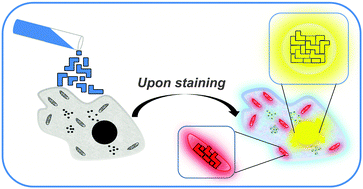When self-assembly meets biology: luminescent platinum complexes for imaging applications
Abstract
Luminescent platinum complexes have attractive chemical and photophysical properties such as high stability, emission in the visible region, high emission quantum yields and long excited state lifetimes. However the absorption spectrum of the compounds in the UV region, preventing their excitation in the harmless visible/red region, as well as the strong quenching of the luminescent triplet state, caused by dioxygen in water and biological fluids, reduces their possible applications for imaging. Therefore a possible solution to these drawbacks is to take advantage of the high tendency of such square planar compounds to self-assemble in supramolecular structures. The assemblies can be considered new chemical species with enhanced and tunable properties. Furthermore the assembly and disassembly process can be explored as a tool to obtain dynamic labels that can be applied in biomedicine. The change in color, the turn on and off of luminescence but also of the reactivity, the protection from quenching and environmental degradation are some of the attractive properties connected to the aggregation of the complexes.

- This article is part of the themed collection: Supramolecular Photochemistry

 Please wait while we load your content...
Please wait while we load your content...